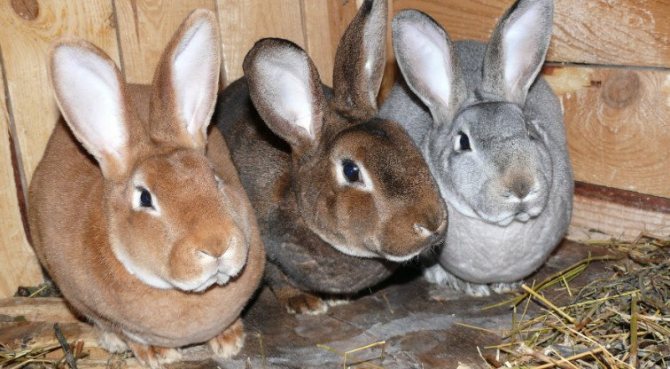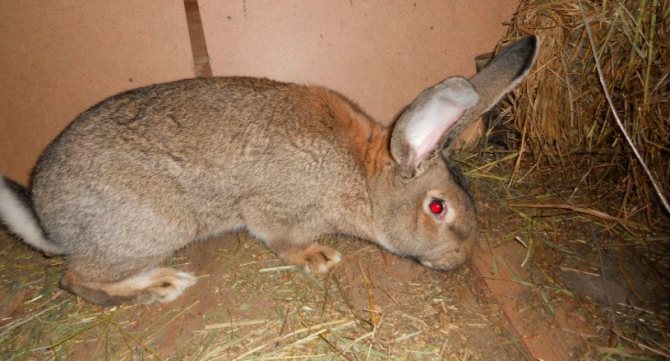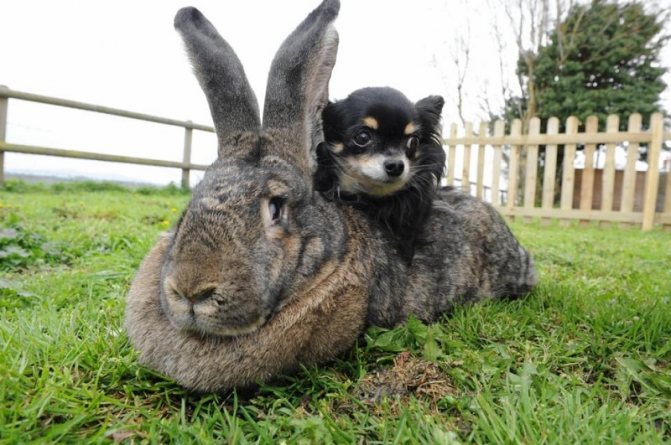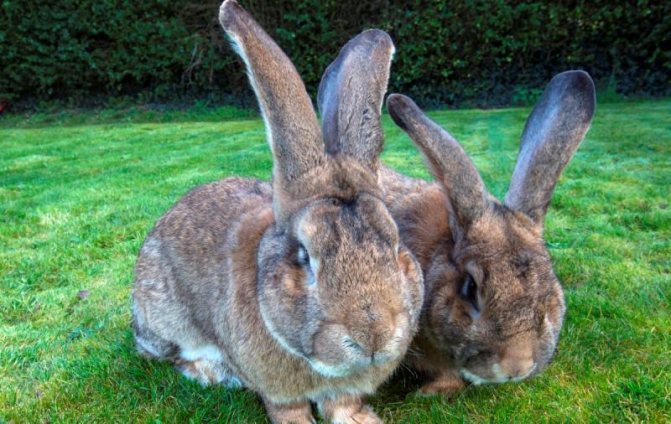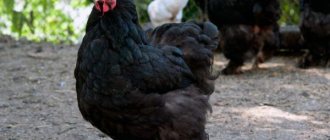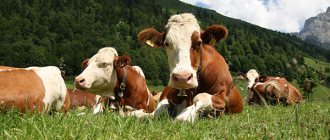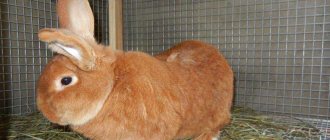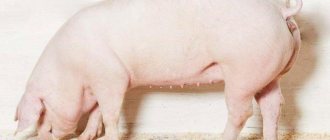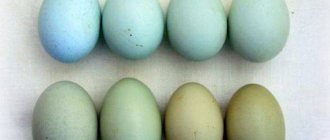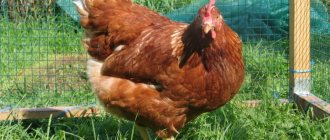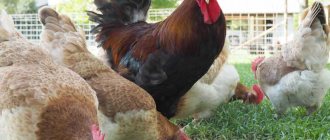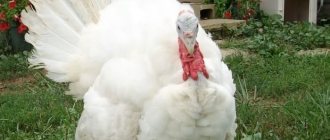Today, giant rabbits are the largest representatives of rodents. Thanks to the efforts of breeders around the world, there are several dozen different varieties of giant animals. But in our homeland, two breeds are most common - this is a gray and a white giant.
Below, we will consider which giant rabbits are the most popular, and how to independently raise such individuals in our backyard.
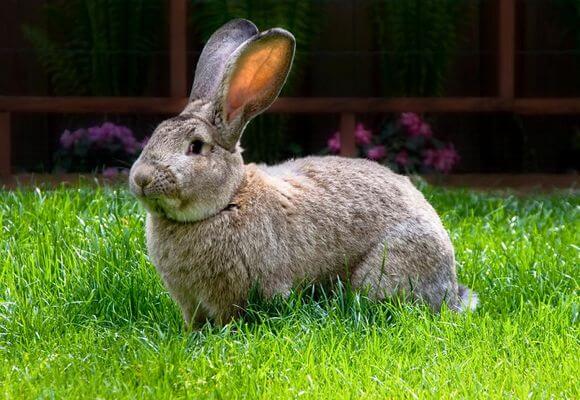
Popular breeds
Breeders in many countries of the world are actively involved in breeding various breeds of giant rabbits, of which there are several dozen today. Animals of giant species differ from each other not only in appearance, but also in productivity characteristics. Some are intended for meat production and can reach a weight of 10-12 kg, others with valuable fur are grown primarily for the sake of skins.
The giants include:
- flandre;
- white and gray giants;
- butterfly;
- Soviet chinchilla;
- German - rizen and strokach;
- Viennese blue;
- French ram;
- New Zealand rabbits and many others.
"Gray giant"
This breed was bred in the middle of the last century and is considered versatile, as it provides a large yield of meat and skins of good quality. Adult rabbits usually weigh between 4 and 7 kg, but there are also larger individuals. The body is long - about 60 cm, the paws are powerful. The fur is quite thick, but in density it is inferior to representatives of specialized skinned species. According to the standard, the coat color of these animals is gray, the presence of red or "gray" shades is allowed.


Gray (Russian) giants are well adapted to various climatic conditions, included in the State Register of the Russian Federation as recommended for cultivation in all regions
The character is docile and peaceful. Their advantages also include early maturity and proliferation (8-14 rabbits per litter), a strong immune system and excellent tolerance to low temperatures.
Read more about the features of the "Gray Giant" breed rabbits in the article on our website.
"White giant"
White giants are owners of very high quality snow-white fur. The skins of these animals are in great demand and have a fairly high value. In addition, the meat yield during slaughter is about 50% of the live weight, which in adults reaches 4.8-5.2 kg (maximum up to 8 kg). The average length of the body of the white giant is 50-60 cm, and the girth of the sternum is about 37 cm. The eyes are red.


White giants are included in the State Register of the Russian Federation as a meat-skin breed suitable for breeding throughout the country
Among the advantages of these rabbits, it should also be noted the favorable conversion of feed at a rapid rate of weight gain and the simplicity of the animals to the conditions of keeping.
You will find the main characteristics and a detailed description of the White Giant breed in a separate article on our website.
"Flandre"
Flanders - Belgian giants - one of the oldest and most widespread breeds of rabbits in the world. On the basis of the "Belgians", breeders have bred many other varieties. These animals differ from their counterparts in really gigantic sizes: adults weigh 7-8 kg (up to 10-12 kg), and the body length is about 70 cm. The color of the coat can be different.


Flandre (pictured) is able to gain more than 10 kg of live weight, from which the meat yield is obtained at a level of about 55%
In terms of slaughter yield and quality, flanders skins are somewhat inferior to representatives of specialized breeds, but lower rates are compensated for by the impressive mass and size.
"Butterfly"
This breed appeared relatively recently - in the late eighties of the 20th century. The main distinguishing feature of these rabbits is their unique color: the white "fur coat" is decorated with dark spots of various sizes, located mainly on the sides and on the back. Ears, eye rims, nose and fur around it are also dark. Note that sometimes the spots may not be black, but have a gray-blue or yellowish-brown color.
Butterfly rabbits are the smallest of the giant breeds. The average weight of an adult is about 4.5 kg, and the body length is about 55 cm.


Spectacular fur coloration, high quality skins and meat make butterflies attractive for breeding in households and on an industrial scale.
The meat-skin characteristics are at a very decent level. The pluses of the breed also include the rapid growth of young animals, reaching slaughter weight by the age of 5 months, and the fertility of females (8-10 pups per circle).
King of Giants Ralph
There are also real eared giants. Their weight exceeds 10 kg, and their body length is more than 1 m.
The largest rabbit in the world is now a pet named Ralph. He is the champion of the Guinness Book of Records. Its weight reaches 23 kg. Ralph's parents were also record holders.
Before Ralph, this honorary title belonged to a giant rabbit named Darius, whose weight was 19 kg with a body length of 120 cm. He eats a couple of cabbage heads a day, carrots and apples, and also loves bread and corn.
This rabbit is comparable in weight to a 3-4 year old child.
Features of maintenance and care
It is more expedient to place rabbits of giant breeds in wooden cages, placing them in places protected from direct sunlight and drafts. The dwelling should be spacious. Its size is determined individually, taking into account the age and breed of the animal. To grow an adult giant, a cage with an area of at least 0.6 m2 (80 × 100 × 65 cm) is required; for a rabbit with cubs, an aviary of at least 100 × 150 × 65 cm is required.
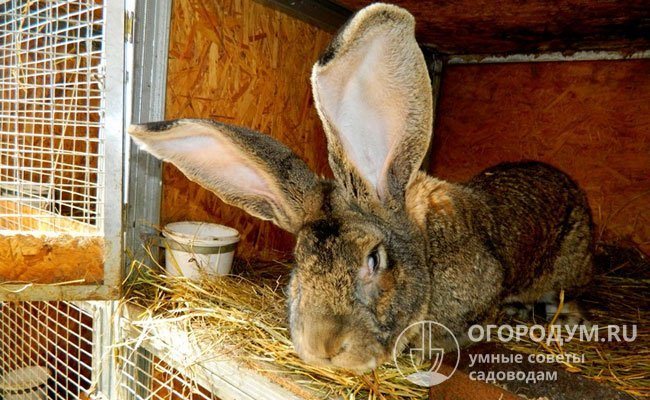

The cage should be spacious, clean, protected from adverse weather factors
When preparing a dwelling for rabbits, it is more practical to make the floor from metal mesh, since it is practically not contaminated with feces, which ensures the maintenance of cleanliness and simplifies maintenance. But in representatives of some giants, for example, white and gray, due to their high weight, there is a predisposition to the appearance of corns and the occurrence of pododermatitis. Therefore, the flooring for each breed of rabbit is selected individually. The solid bottom should be covered with hay, straw or sawdust. The latter option is the most preferable, since sawdust perfectly absorbs moisture and eliminates unpleasant odors.
In the cage, there must be a place for a feeder and drinker, and a mother tank should be equipped for the female.
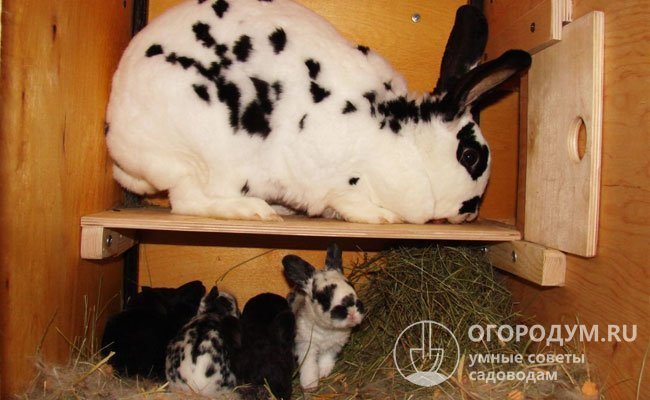

The mother's mother is necessary for raising and milk feeding of rabbits on average up to 1.5 months of age.
Representatives of breeds, adapted for Russian climatic conditions and well tolerating cold temperatures, can be kept outdoors all year round. However, in severe frost, it is better to bring the cells into the room, as there is a risk of frostbite of the limbs.
It is important to keep areas where animals are kept clean to prevent the spread of viruses and bacteria. Cleaning is required at least 1-2 times a week.
The following video will introduce you to an interesting way to equip a cage for a large crawl:
Feeding
Feeding the giants is not a big deal for farmers. The main thing is that the diet of animals is varied and balanced. Rabbit breeders recommend giving pets grass, hay, vegetables (roots, cabbage), fruits, special feed with a high protein content, tree branches (not stone fruit). Also, the food of animals includes cereals (oats, barley) and legumes, bran and oilcakes, mineral and vitamin supplements. It is strictly forbidden to give rabbits wheat, poor quality feed, spoiled food - all this can lead to illness or even death of the animal.
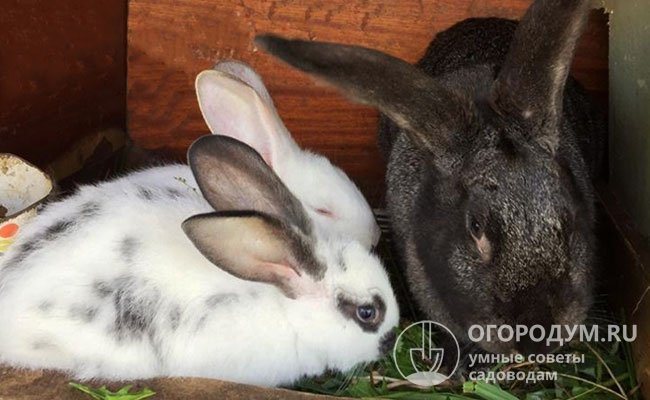

The diet of rabbits should be varied, rich in proteins and vitamins.
Collect grass for rabbits with extreme caution, because some plants can be dangerous to animal health. It is necessary to avoid buttercups, henbane, lumbago, lily of the valley, colchicum, foxglove, etc.
It is better to feed pets in small portions on a schedule - several times during the day. This will normalize the work of the digestive system, improve the quality of rabbit meat. Overeating, which can lead to obesity of animals, should not be allowed.
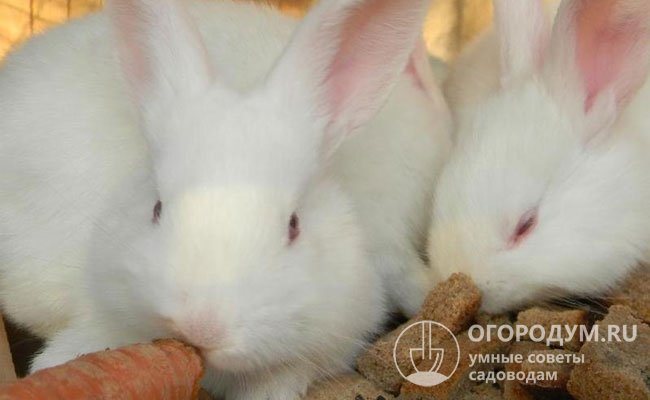

Insufficient feeding can lead to a delay in the growth and development of animals, however, overeating is dangerous for them.
The diet
Given the size and weight of adults, a completely natural question arises - what and how to feed the giant rabbits so that they quickly gain weight. In modern stores, there are a lot of special feeds for these animals, it is not at all necessary to buy them, since the composition of such products is approximately the same (Figure 4).
Note: Ready-made food does not contain the entire complex of nutrients, so it is better to prepare food yourself.
Large meat rabbits can be fed many of the same foods as normal rabbits. Their diet should include grains (particularly barley and oats), fresh chopped root vegetables, cabbage, green grass, legumes, and dry twigs and twigs that your pets can sharpen their teeth on.
Proper feeding and caring for giants requires proper nutrition. In no case should animals be given rotten or spoiled feed, food waste left after a normal human meal, as well as wheat grains and any products from it.


Figure 4. The diet of giant breeds remains the same, but the portions should be much larger
The diet can be made at your own discretion, but you should be prepared for the fact that the giants have an excellent appetite, so their full feeding will cost a considerable amount. However, all your efforts and costs will be fully rewarded with quality animal fur and meat.
Breeding giant rabbits
High fertility is a distinctive feature of all representatives of giants.
The mating is carried out after the rodents reach sexual maturity. In many giants, it occurs much later (at 7-8 months) compared to their smaller relatives (4-5 months). The average number of young rabbits in one litter is 8 individuals (the exception is the German sheep - 4-7).


Females of giants are good mothers, able not only to bring numerous offspring, but also to feed them
Females of large breeds do not have a highly developed maternal instinct - they may not equip a nest or forget about feeding the rabbits. However, they never eat their cubs, and a sufficient amount of milk allows them to feed all offspring up to the age of 1.5 months. The weight of newborn rabbits is about 80-90 g, but with adequate nutrition by the 45th day, they gain up to 1.5 kg.


